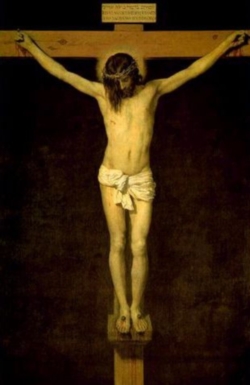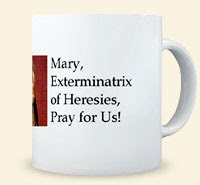 It is certainly not surprising that the disciples were able to understand the meaning of the Cross only slowly, even after the Resurrection. The Lord himself gives a first catechetical instruction to the disciples at Emmaus by showing that this incomprehensible event is the fulfillment of what had been foretold and that the open question marks of the Old Testament find their solution only here (Lk 24:27).
It is certainly not surprising that the disciples were able to understand the meaning of the Cross only slowly, even after the Resurrection. The Lord himself gives a first catechetical instruction to the disciples at Emmaus by showing that this incomprehensible event is the fulfillment of what had been foretold and that the open question marks of the Old Testament find their solution only here (Lk 24:27).Which riddles? Those of the Covenant between God and men in which the latter must necessarily fail again and again: who can be a match for God as a partner? Those of the many cultic sacrifices that in the end are still external to man while he himself cannot offer himself as a sacrifice. Those of the inscrutable meaning of suffering which can fall even, and especially, on the innocent, so that every proof that God rewards the good becomes void. Only at the outer periphery, as something that so far is completely sealed, appear the outlines of a figure in which the riddles might be solved.
This figure would be at once the completely kept and fulfilled Covenant, even far beyond Israel (Is 49:5-6), and the personified sacrifice in which at the same time the riddle of suffering, of being despised and rejected, becomes a light; for it happens as the vicarious suffering of the just for "the many" (Is 52:13-53:12). Nobody had understood the prophecy then, but in the light of the Cross and Resurrection of Jesus it became the most important key to the meaning of the apparently meaningless.
—from Hans urs von Balthasar, A Short Primer for Unsettled Laymen
























